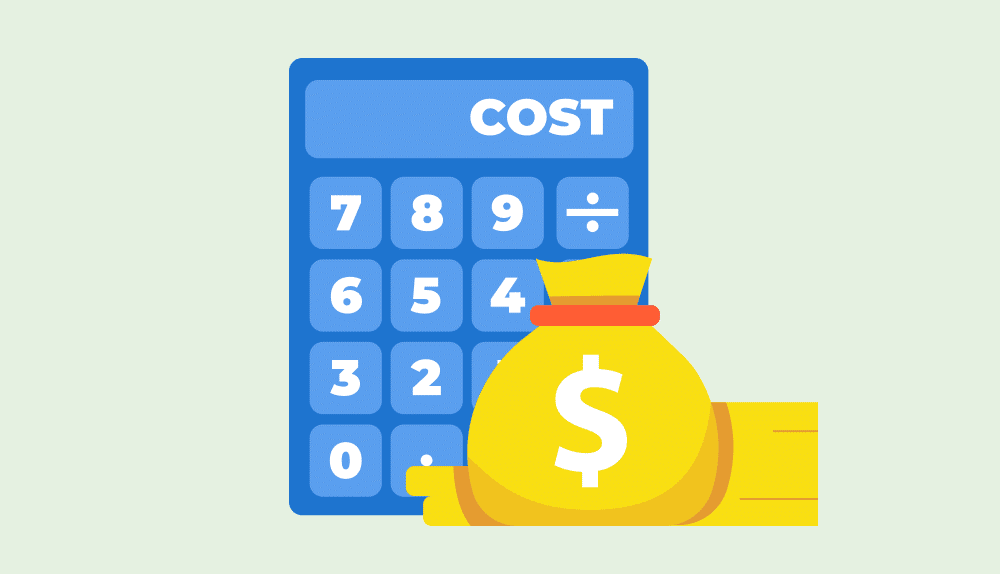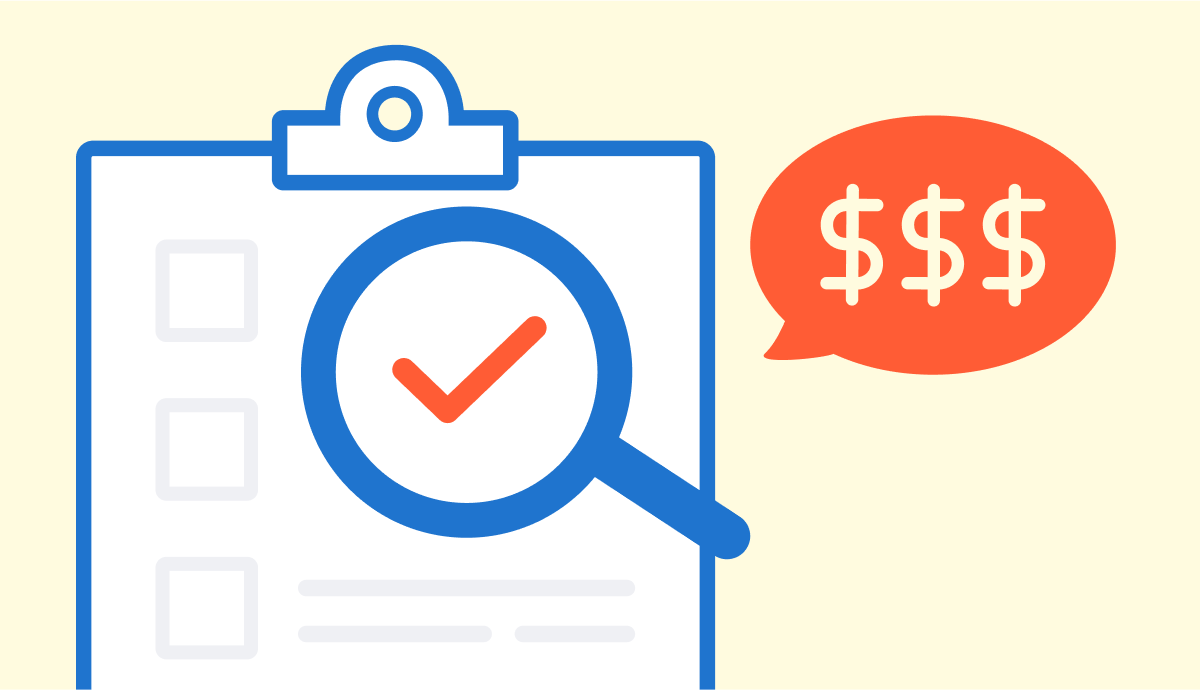Accepting a new project without proper estimation is like diving into the unknown. Sure, you get excited if the client is big and the project is a perfect fit but sooner or later, reality catches up with you, and — in the worst-case scenario — your project will not be profitable.
Many professional services companies avoid putting real effort into cost estimation because they think their estimations aren’t going to be accurate anyway.
However, if you don’t start estimating project costs, you’ll never get better at it. And once you get better at it, you’ll take your business to the next level by ensuring all your projects have a healthy profit margin.
So, where do you get started with cost estimation? Keep reading this article to discover best practices and what challenges to prepare for.
What happens if you fail to estimate project costs accurately?
Why is estimating project costs worth the trouble? Here are a few things that are bound to go wrong when you start a client project without knowing how much it will cost you.
Your Profit Margin Will Become Unpredictable
If you don’t estimate your direct and indirect project costs, you’ll have no idea how much you need to cover to complete the project and still get the project margin your business needs.
It’s not only about coming up with the number of hours needed to build a few features and multiplying this number by the hourly rate of your employees. You also need to add indirect costs like your project or company overheads (calculating the overhead per employee is the best approach here).

You Will Struggle in Making Decisions
It’s hard to make the right decision about a project without knowing whether it will bring you the profit margin you need or result in loss and frustration.
Cost estimation helps you understand how that project will play out in the future and what kind of engagement it will require from you over the long term. You will know whether it’s worth involving your employees in it in the first place.
It Will Only Worsen in the Future
If you’re running a small company where keeping up with everything is still possible, remember that it will not stay that way for long. As your business grows, the complexity will catch up with you.
Comparing a new project to one you’ve already completed to come up with an estimation isn’t going to be enough, especially if you start hiring more employees and contractors with varied hourly rates.
Your Employees Will Also be Affected
A good employee is invaluable and you need to keep an eye on their utilization rate, or else you risk overworking them and causing them to crash and burn. You need to reach a good utilization rate for your business without overwhelming your employees. How can you possibly get started without tracking employee performance and estimating the number of hours the project needs from them?
Lack of Historical Data Will Only Make Estimations Harder
In an ideal scenario, you should be able to develop a long-term estimate and accurate cost forecast for any project that lands on your doorstep. But we get it – estimation is hard. It will only become harder if you don’t have any historical data about past projects to back up your estimates. What you need to do isn’t just estimate a project, launch it hoping that all goes according to plan, and then move on to estimating another one. You need to find a way to compare your plans to reality as the project is in progress. Luckily, solutions like BigTime help you do that and gain valuable data to inform your future estimations.
What is a good cost estimation?
Every project cost estimation includes two types of costs:
- Direct costs: The salaries of employees directly involved in the project.
- Indirect costs: Other costs that you need to bear to make the project a reality, also called project and business overheads.
Why is counting overhead costs so important?
Every professional services company has ongoing expenses for operating the business. These need to be paid, whether all your employees are working or half of them are sitting on the bench.
Here are a few examples of overhead costs for a service-based business:
- Office rent, utilities, equipment, and insurance costs
- Support staff costs (administrative and marketing costs)
- Material costs (materials you use to provide services)
- Management board expenses
You can differentiate between business overhead and project overhead costs. Buying a software license required to deliver a project is a project overhead because this cost doesn’t apply to the entire company. Administrative and marketing costs are business overheads because they do.
What is the Estimate to Complete?
Another concept you should know when estimating project costs is estimate to complete (ETC).
Estimate to complete refers to the remaining cost to complete a project. Estimate to complete looks at the costs from the present moment until the end of the project; it never includes project expenditures that have already been made.
This metric plays a critical role in comparing your plans to reality. You can use it to check the project’s burn rate and act immediately if you discover that you’ve already burned 70% of your project budget when you’re only 40% through the planned work.
6 Cost Estimation Techniques
Here are some of the most popular cost estimation techniques used by project managers across every sector.
1. Bottom-Up Estimation
If a comprehensive work breakdown structure is an option, you can easily use this approach. It’s the most accurate estimating technique out there.
How does it work? You start by dividing the project deliverables into work packages using a work breakdown framework (each work package includes a number of tasks). The project team calculates the cost of finishing each task and then adds up the prices of all the project’s tasks and work packages to arrive at a cost estimate for the entire project.
Bottom-up estimates become better with time because experienced project teams get better at estimating the costs of tasks and work packages.
2. Top-Down Estimation
Analogous estimating — also called top-down estimating or historical costing — relies on historical project data to form estimates for new projects.
Top-down estimating draws from a purpose-built archive of historical project data, often specific to the company. If a business repeatedly completes similar projects, it becomes easier to draw parallels between their deliverables and associated costs and then adjust these in line with the scale and complexity of a project.
3. Parametric Estimation
The parametric approach to estimating uses unit prices for projects with comparable operations. The key here is the high degree of repetition.
To use this technique, start by breaking down a project into work units. Then, calculate the cost per unit, multiply the number of units by the cost per unit, and — finally — multiply the total cost by the cost per unit to estimate the overall cost.
Your estimations will be accurate as long as you get the cost per unit right.
4. Three-Point Estimation
This technique originates from the Program Evaluation and Review Technique (PERT), a statistical approach to estimating project costs by coming up with optimistic, pessimistic, and most likely estimates for each activity.
Three-point estimating calculates the predicted costs of the optimistic, pessimistic, and most probable scenarios using various weighted formulas like this:
Expected value = [optimistic estimate + pessimistic estimate + (4 x most likely estimate)] ÷ 6
5. Empirical Estimation
Empirical approaches use software to draw on past project experiences. They’re effective for similar projects that occur regularly — like building a minimum viable product.
A project manager looking to develop an empirical cost estimate must fill out a form with the project’s features and attributes, and the system calculates the cost depending on the type of project at hand.
6. Delphi Cost Estimation
Named after the Oracle of Delphi from ancient Greek mythology, this method involves gathering input from a group of experts or stakeholders anonymously. Participants provide their estimates for costs, and a facilitator compiles and analyzes the responses, summarizing the range of estimates and any significant discrepancies. The process typically involves multiple iterations to converge towards a consensus. Delphi cost estimation leverages the collective wisdom of diverse perspectives to produce more accurate and reliable cost estimates, enhancing decision-making in project planning and financial forecasting.
Challenges of Cost Estimation
Nobody said it would be easy. Here are the most common challenges to prepare for on your path to cost estimation:
- Lack of experience with similar projects: The easiest way to estimate a task or work package is to draw on your previous experience. But what if your team has never completed a similar operation before?
- Length of the planning horizon: Long-term planning is tough if you don’t have any tools supporting you throughout the process. However, developing a long-term calculation of your project and business costs is key for keeping your company afloat.
- Expecting employees to work at maximum productivity: 100% utilization of your experts might work for a week or two, but not longer. People need time to have lunch, attend conferences and meetups, and improve their skills. This would lead them straight down the burnout road.
- Failing to identify risks: Every project carries its specific risks, and it’s your job to prepare contingency plans and reserves in case anything happens.
- Not updating cost estimates after the project scope changes: Cost estimation isn’t a one-off job; it’s a process. You need to have up-to-date data for your estimations. It will usually take a few estimations for you to start seeing where you tend to underestimate or overestimate — but only if you update your data regularly.
How Resource Management Software Helps Estimate Project Costs
Efficient project management involves smart resource allocation and streamlined calculations. With resource management software like BigTime, which stores employee hourly rates, estimates are easily adjusted to reflect actual hours worked and overhead costs, ensuring updated project margins.
Smart resource allocation means choosing the right employee for the job based on financial projections, maintaining the needed profit margin. BigTime simplifies overhead calculations for long-term projects with fluctuating costs, ensuring a consistent profit margin throughout.
Resource management software also allows you to analyze project finances over time, offering insights into their impact on cash flow. This streamlined approach facilitates better decision-making and financial stability.





